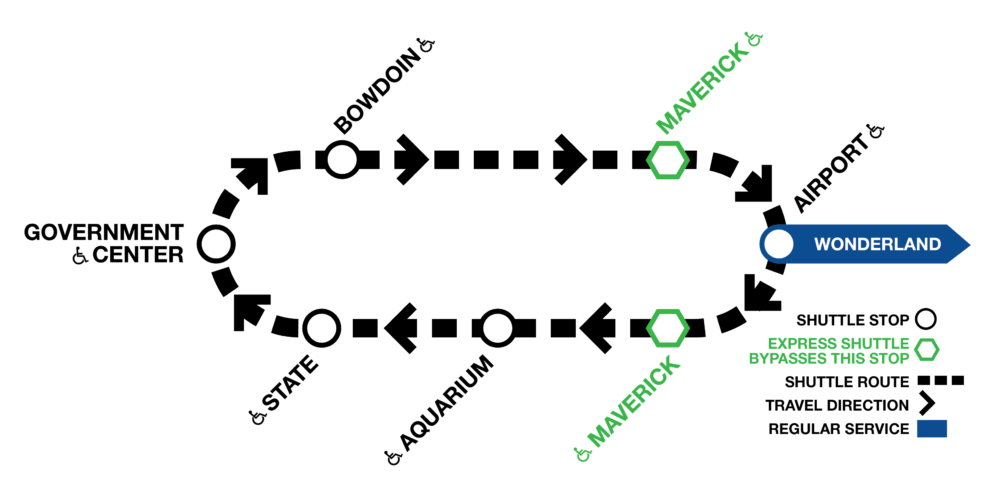Advertisement
Coronavirus Coverage
Blue Line Closure May Offer A Glimpse Of What Public Transit Could Look Like With Social Distancing
As Massachusetts begins a gradual reopening of non-essential businesses, there are many challenges for the state's transportation system — particularly the MBTA.
Ridership on the T has plummeted during the coronavirus pandemic, and transit officials say they expect riders to slowly return to the MBTA.
But as more people begin to commute again, a big question remains for the MBTA: How do you run a public transit system while following social distancing guidelines?
We may actually get a glimpse of how that might work on Monday, when part of the Blue Line will begin a two-week shut down for repairs and will be replaced with shuttle bus service.
Right now about 8,300 riders use the Blue Line every day. To allow for social distancing and comply with public health guidelines, the T plans to run shuttle buses every 50-60 seconds and limit them to 15-20 riders — about a third of the normal capacity — according to MBTA general manager Steve Poftak.
MBTA personnel will closely monitor and manage the amount of passengers that board the shuttles, and everyone must wear a face covering per the governor's order, T spokesman Joe Pesaturo said.
The T will also run two shuttle routes between Bowdoin and Airport stations. One route will be an express that bypasses Maverick station, which tends to have higher ridership than the other stations. The other route will make all stops.
"The intent there is to divide some of the volume of the line," Poftak said at last week's MBTA Fiscal Management and Control Board meeting.

It's unclear which of these social distancing measures may be implemented elsewhere on the public transit system as the state begins its phased re-opening. But the T is already making plans.
Some ideas the T is considering include:
- Limiting the number of riders on buses (though there are budget and equity concerns with implementing limits system-wide.)
- Increasing service in off-peak times. Transit officials are also talking with business leaders to see if people's work schedules and commutes can be staggered.
- Implementing more dedicated bus lanes. This is something mayor Marty Walsh is considering in Boston to allow the T to run buses more frequently and with fewer riders.
In addition to managing capacity, the T may also face the challenge of not having enough workers to run the system as service ramps up. Over 450 workers are on leave due to COVID-19, according to Poftak.
The MBTA is expected to say more about its service plans this week.
In the meantime, the two-week closure of the Blue Line could offer some insight into what measures may or may not work to ensure social distancing on public transit.
The section of the Blue Line that is temporarily closed goes through some of the areas hit hardest by the coronavirus. And ridership on the line has remained more durable than other parts of the transit system. That's likely because many essential workers live along the line.
This segment aired on May 18, 2020. The audio for this segment is not available.
